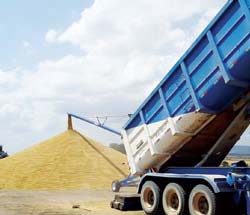10 Agricultural Strategies to Increase Income
 Farming is tough as farmers are variables such as favourable weather conditions like the right amount of rain at the right time of the year. This stimulates weed growth that needs to be killed to plant the grains without compromising the nutrients they get from the soil. The rain needs to be regular throughout the growing season, and then they need good sunny days to complete the growing stage.
Farming is tough as farmers are variables such as favourable weather conditions like the right amount of rain at the right time of the year. This stimulates weed growth that needs to be killed to plant the grains without compromising the nutrients they get from the soil. The rain needs to be regular throughout the growing season, and then they need good sunny days to complete the growing stage.
During this stage, good rains are again required, and then again nice sunny days to complete the process of ripening the harvest during. With so many variables involved, the entire process is risky.
The Russian Federation’s invasion of Ukraine and the war have resulted in destruction, displacement of people, and economic havoc. The economic consequences of the war are worldwide. Ukraine is a major oilseed and grain exporter. Hence the prospect of a reduced supply of grains and oilseed to the world market has resulted in a sharp increase in its price.
 When operating an agriculture business, every decision you make is important, and everything you decide to spend money on matters. It is, therefore, essential to think about what you need to purchase outright so as to ensure your company can thrive, while also being aware of what you can lease to keep operations ticking over.
When operating an agriculture business, every decision you make is important, and everything you decide to spend money on matters. It is, therefore, essential to think about what you need to purchase outright so as to ensure your company can thrive, while also being aware of what you can lease to keep operations ticking over. Five years ago, the Kenyan government announced its “big four” development strategy to be implemented over the next five years. Food security was one of the key strategies. The others are affordable housing, manufacturing and universal health care.
Five years ago, the Kenyan government announced its “big four” development strategy to be implemented over the next five years. Food security was one of the key strategies. The others are affordable housing, manufacturing and universal health care.